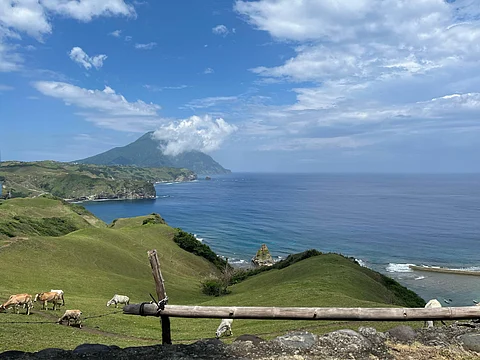
- NEWS
- the EDIT
- COMMENTARY
- BUSINESS
- LIFE
- SHOW
- ACTION
- GLOBAL GOALS
- SNAPS
- DYARYO TIRADA
- MORE

The Department of Tourism (DOT) in Region II, which includes the splendid island province of Batanes, has advised travelers to avoid “do-it-yourself” (DIY) trips and instead coordinate with local tour operators to ensure a better experience.
“Batanes is not for DIY travelers. They should coordinate with our available tour operators and tour guides because traveling by themselves may ruin their stay here. The average number of days for you to move around the islands is five days. They might get lost, which is why they need a company from the tourism office,” said DOT Region II Director Troy Alexander Miano in an interview.
Apart from Batanes, the region also includes the provinces of Cagayan, Isabela, Nueva Vizcaya, and Quirino.
An official from Batanes earlier said that the local government is aiming to increase both local and international tourist arrivals and is calling for more infrastructure projects, such as access roads and cell sites, with help from the national government.
Miano said Batanes offers many accredited homestays and transient houses, along with budget hotels, with accommodations ranging from P5,000 to P9,000 per night.
“Batanes market is European because Batanes had already been introduced to Germany, Austria, and Poland. They are our frequent travelers as they (practically) have the means. But for Asian travelers, we are also being visited by Chinese, Korean, and Japanese tourists. ASEAN tourists are very minimal here,” Miano noted.
He added that the participation of ambassadors from Malaysia, Indonesia, Vietnam, and other ASEAN countries in the Batanes leg of DOT’s Philippine Experience Program (PEP) could help promote the island to more ASEAN travelers.
During the program, Malaysian Ambassador to the Philippines, His Excellency Dato' Abdul Malik Melvin Castelino bin Anthony, pledged to facilitate talks with budget airline AirAsia to help bring in more tourists.
The Heritage and Tourism Office of Batanes reported that 4,197 travelers have visited the province so far this year, with over 13,000 recorded in 2024.
Officials acknowledge that traveling to Batanes is considered a luxury, with airfare ranging from P25,000 to P30,000 depending on the season.
“During peak season, which from March, April, and May, airfare is soaring since the flight is monopolized and limited. Cebu Pacific stopped their operations here because of the flight cancellations that happened in the past due to unpredictable weather conditions. That is why we are thankful if AirAsia will participate in bringing in tourists here,” Miano said.
Currently, only Philippine Airlines flies to Batanes via Ninoy Aquino International Airport and Clark International Airport. SkyPasada also operates flights from Tuguegarao to Basco, with one-way tickets priced above P7,000.
Despite the cost, Florence Rivera, president of the National Association of Independent Travel Agencies (NAITAS), said Batanes could adopt Bhutan’s “low-impact, high-value” tourism model.
“I go around the world and one of the places I love is Bhutan, and that's the model that they have, low-impact, high-value tourism. And if there's one place who could learn from them, I think it's Batanes. Batanes is even more beautiful than Bhutan I would say. They have the highest peaks in the world. But here you have rolling hills, you have beautiful mountains, you have a culture to be proud of,” Rivera said.
This sentiment was echoed by Miano, who said, “Sometimes, it is good to maintain the high cost of traveling to Batanes to level the tourism standard of Batanes.”
“Sometimes, if a place is very easy to reach, then the class of the destination is becoming low. That is our advantage. But Batanes should be, at least, open for all Filipinos, therefore the connectivity should be improved. We have already had talks with the management of Cebu Pacific for their comeback here,” he added.
For the entire Region II, Miano said they are expecting to double the number of local and international tourists, particularly among Gen Z travelers.
“They have different perspectives when it comes to tourism. These young ones are saving to travel to the country’s destinations. Even if Cagayan Valley has so many problems when it comes to connectivity, these GenZs, considered adventurous travelers, do not have connectivity issues. They would ride a bus for more than 12 hours just to reach mainland Cagayan Valley,” he said.
He also revealed that the LGUs of Cagayan, Isabela, Nueva Vizcaya, and Quirino have now recognized tourism as a key economic driver alongside agriculture.
“It was only now that they realized that tourism is one of the big factors in the economic development of their provinces,” Miano said.
